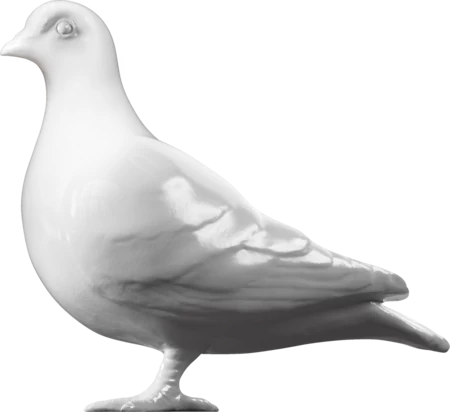Post-Medieval — C.1635-39; possibly a little later
The 'Chesterfield' flute; The Scudamore flute
This cider glass has a flute-shaped bowl and is diamond point engraved with the Royal Arms and the arms of the Scudamore family: three stirrups within lozenge-shaped escutcheon linked by festoons of fruit and flowers, with below, a stag beside a gate and five trees (three lopped and one a stump) and the letter S (for Scudamore) repeated three times. The trees are probably apple trees, since Scudamore had extensive cider apple orchards at Holme Lacy, his estate in Herefordshire. The stump is probably a grafted redstreak apple on to a root stock, and the lopped trees represent the early stages of pruning and training. By the 1660s cider production at Holme Lacy was a large-scale enterprise. A single redstreak apple tree could produce 300 gallons of cider a year, and by the end of 1667, ten boxes of cider weighing over 55 cwt were sent to London, the carriage alone costing more than £16.
Sir John Scudamore, the first Viscount of Sligo (1601-71), was an ambitious politician who sought office at the Stuart court, and failed. He was appointed ambassador to France in 1635, but proved an inept diplomat. During the Civil War he supported the Royalist cause but was defeated by the Parliamentary forces in the 1643 battle of Hereford. He spent the remainder of the war as a prisoner of parliament in London. Scudamore's real success lay in his agricultural expertise, in particular sericulture and the propagation of fruit trees and mulberries. He developed the redstreak variety for cider production and his fame spread with that of the apple, often called the 'Scudamore crab', and the cider, allegedly known as 'vin de Scudamore' by an Italian prince visiting Oxford. Scudamore was famed for his hospitality and offering his guests his cider wine. Provenance by descent through the Scudamore-Stanhope family to the Earls of Chesterfield. The quality of the engraving suggests English work rather than Netherlandish. The flute-shaped bowl is joined by merese to a hollow, vertically ribbed knop, basal merese and folded foot.
- Category:
- Post-Medieval
- Object ID:
- 34.139/1
- Object name:
- The 'Chesterfield' flute; The Scudamore flute
- Object type:
- Artist/Maker:
- —
- Related people:
- Related events:
- Related places:
- Production date:
- c.1635-39; possibly a little later
- Material:
glass
- Measurements/duration:
- H 368 mm, DM 132 (overall)
- Part of:
- —
- On display:
- —
- Record quality:
- 100%
- Part of this object:
- —
- Owner Status & Credit:
Permanent collection
The Garton Collection of English Glass, presented in memory of the late Sir Richard Garton, G.B.E., by his Daughters and Grandchildren
- Copyright holder:
digital image © London Museum
- Image credit:
- —
- Creative commons usage:
- —
- License this image:
To license this image for commercial use, please contact the London Museum Picture Library.

